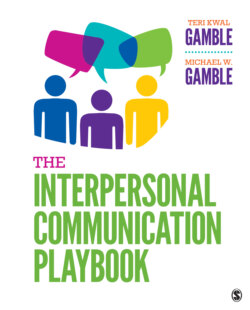Читать книгу The Interpersonal Communication Playbook - Teri Kwal Gamble - Страница 85
На сайте Литреса книга снята с продажи.
It’s a Cycle
ОглавлениеA self-fulfilling prophecy occurs when we verbalize a prediction or internalize an expectation that comes true simply because we act as if it already were. For example, have you ever been invited to a function you did not want to attend because you expected to be bored? Were you? If you were, to what extent is it possible that your prediction of boredom increased the likelihood of its occurrence?
There are five basic steps in the self-fulfilling prophecy cycle (see Figure 2.2).30 First, we form expectations of ourselves, others, or events—for example, “Monica won’t like me.” Second, we communicate the expectation by exhibiting various cues—“so I’ll keep my distance from Monica.” Third, others respond to the cues we send by adjusting their behavior to match our messages—Monica tells herself, “Ed is stuck up. I don’t even want to talk to him.” Fourth, as a result our initial expectation comes true—“I was right; Monica does not like me.” Fifth, our interpretation of the actions of others strengthens our original belief—“Every time I see Monica, I am reminded that she does not like me.”
Description
Figure 2.2 The Self-Fulfilling Prophecy Story
A self-fulfilling prophecy can be either self-imposed or other-imposed. When your own expectations influence your behavior, the prophecy is self-imposed. When the expectations of others help direct your actions, the prophecy is other-imposed. Either way, we exhibit behavior that we or another person expects.
